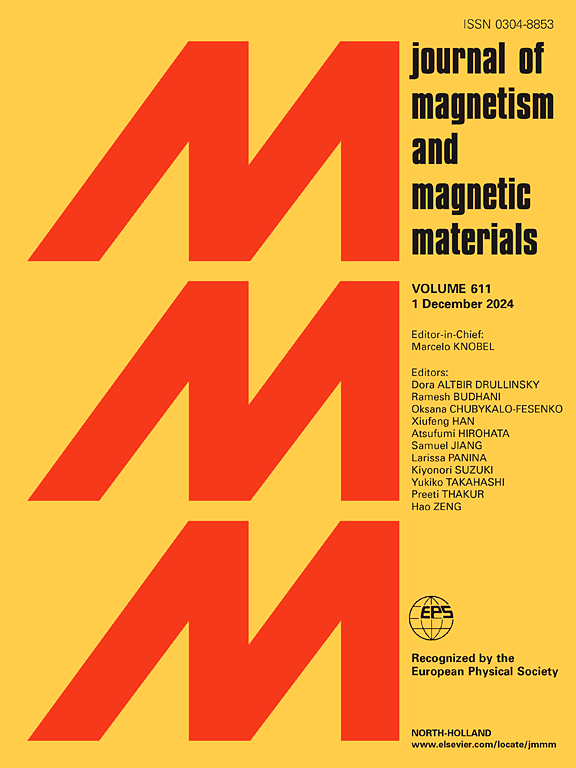金属磁记忆法定量表征局部腐蚀桥梁钢屈服状态的研究
IF 2.5
3区 材料科学
Q3 MATERIALS SCIENCE, MULTIDISCIPLINARY
引用次数: 0
摘要
腐蚀对桥梁钢构件的承载能力构成重大威胁。金属磁记忆技术是一种很有前途的腐蚀损伤检测技术。本文对18个局部腐蚀的Q345qD试样进行了拉伸试验,测量了所有试样的SMFL信号HSF(y)。结果表明:随着拉伸载荷的增加,腐蚀区HSF(y)信号的突变程度在屈服前单调增大,屈服后单调减小;HSF(y)信号的最大值与最小值之差HSF(y)m作为磁特性参数,在屈服荷载处呈现最大值,为判断局部腐蚀桥梁钢的屈服状态提供了潜在的可能性。在此基础上,提出了修正弹塑性磁-力耦合模型和与磁化相关的三维磁荷模型,进一步描述了腐蚀桥梁钢的磁性特征参数与拉伸载荷之间的定量关系。理论曲线与实验数据吻合较好,基于最大理论磁特征参数的腐蚀试样屈服载荷表征误差平均为2.21%。这表明所建立的理论计算模型能够准确反映腐蚀试件的屈服荷载。该研究为通过MMM表征腐蚀桥梁构件的屈服状态提供了基础。本文章由计算机程序翻译,如有差异,请以英文原文为准。
Study on quantitative characterization of yield state for locally corroded bridge steel via metal magnetic memory method
Corrosion poses a significant threat to the load-bearing capacity of steel components in bridges. Metal Magnetic Memory (MMM) emerges as a promising technique for detecting corrosion-induced damage. In this paper, the tensile tests for 18 Q345qD specimens with local corrosion were performed and the SMFL signals HSF(y) on all specimens were measured. The results show that as the tensile load increased, the mutation degree of the HSF(y) signal in the corroded region increased monotonically before yielding and decreased monotonically after yielding. The difference HSF(y)m between the maximum and minimum of HSF(y) signals, as a magnetic characteristic parameter, showed a maximum at the yield load, which had a potential possibility for the judgment of the yield status for the locally corroded bridge steel. Furthermore, the modified elastoplastic magneto-mechanical coupling model and the magnetization-related 3-D magnetic charge model were proposed to further describe the quantitative relationship between the magnetic characteristic parameter and tensile load for the corroded bridge steel. The theoretical curve agreed well with the experimental data, and the characterization error of yield loads for corroded specimens based on the maximum theoretical magnetic characteristic parameter averaged 2.21%. This demonstrated that the established theoretical calculation models can accurately reflect the yield load of corroded specimens. This research serves as a base for the yield state characterization for corroded bridge members via the MMM.
求助全文
通过发布文献求助,成功后即可免费获取论文全文。
去求助
来源期刊

Journal of Magnetism and Magnetic Materials
物理-材料科学:综合
CiteScore
5.30
自引率
11.10%
发文量
1149
审稿时长
59 days
期刊介绍:
The Journal of Magnetism and Magnetic Materials provides an important forum for the disclosure and discussion of original contributions covering the whole spectrum of topics, from basic magnetism to the technology and applications of magnetic materials. The journal encourages greater interaction between the basic and applied sub-disciplines of magnetism with comprehensive review articles, in addition to full-length contributions. In addition, other categories of contributions are welcome, including Critical Focused issues, Current Perspectives and Outreach to the General Public.
Main Categories:
Full-length articles:
Technically original research documents that report results of value to the communities that comprise the journal audience. The link between chemical, structural and microstructural properties on the one hand and magnetic properties on the other hand are encouraged.
In addition to general topics covering all areas of magnetism and magnetic materials, the full-length articles also include three sub-sections, focusing on Nanomagnetism, Spintronics and Applications.
The sub-section on Nanomagnetism contains articles on magnetic nanoparticles, nanowires, thin films, 2D materials and other nanoscale magnetic materials and their applications.
The sub-section on Spintronics contains articles on magnetoresistance, magnetoimpedance, magneto-optical phenomena, Micro-Electro-Mechanical Systems (MEMS), and other topics related to spin current control and magneto-transport phenomena. The sub-section on Applications display papers that focus on applications of magnetic materials. The applications need to show a connection to magnetism.
Review articles:
Review articles organize, clarify, and summarize existing major works in the areas covered by the Journal and provide comprehensive citations to the full spectrum of relevant literature.
 求助内容:
求助内容: 应助结果提醒方式:
应助结果提醒方式:


